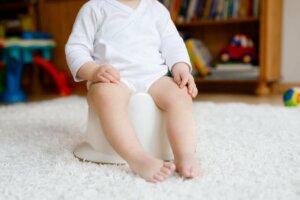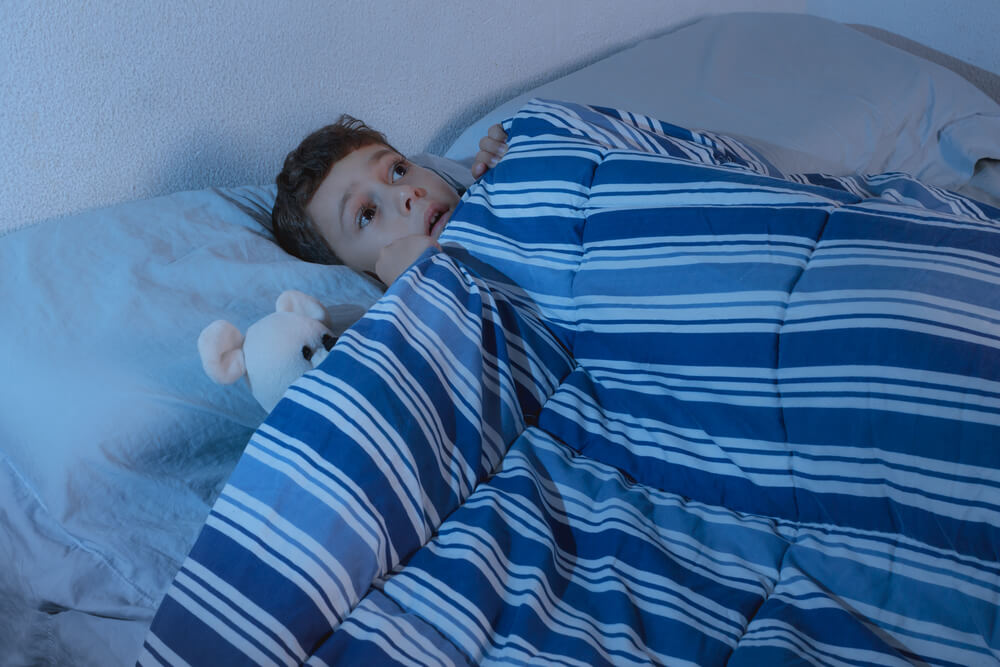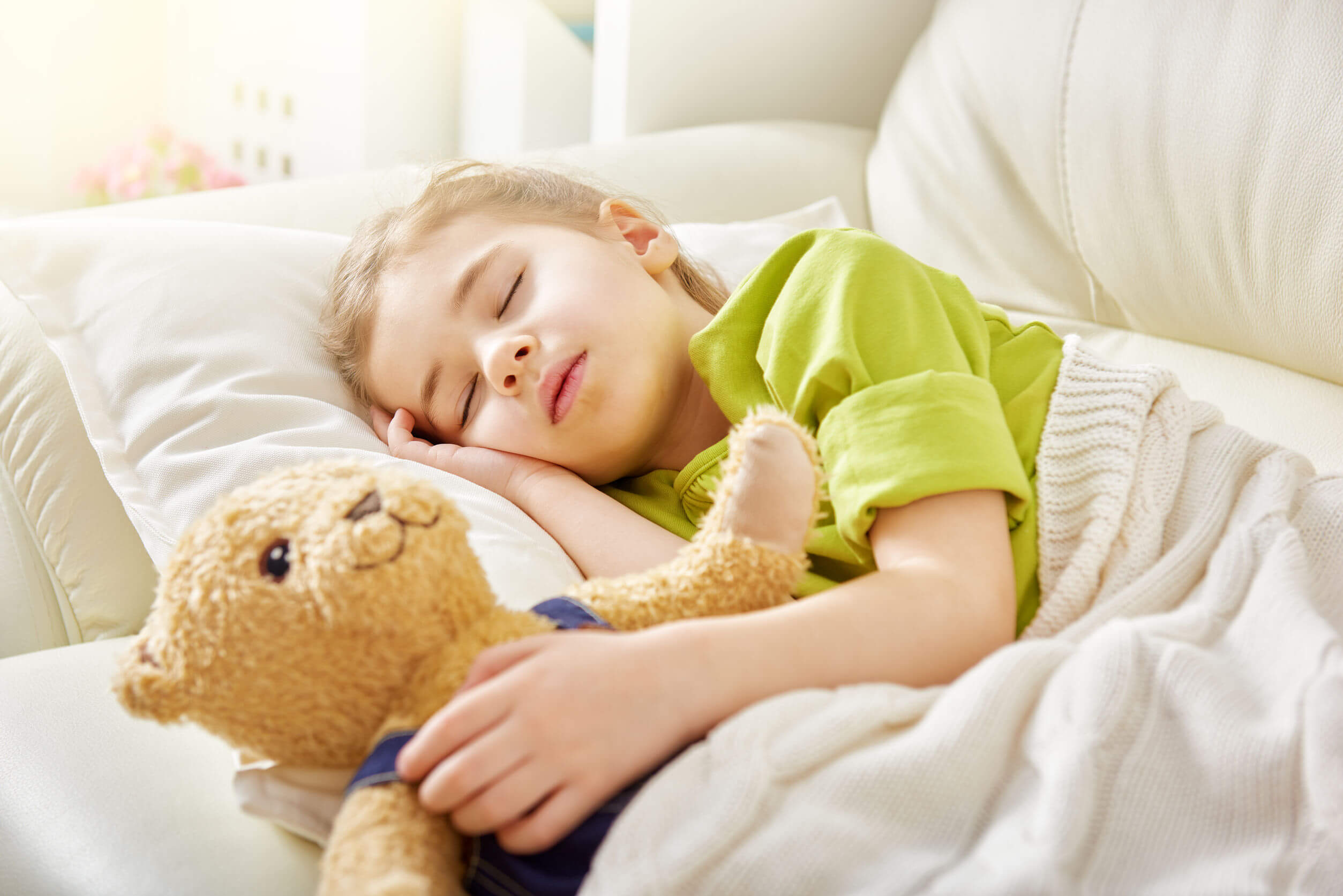Encopresis: Symptoms, Causes, Types and Treatment

Encopresis is a bowel movement disorder in children, that involves defecating at inappropriate times or outside the bathroom. The child may not be able to control it, or they may do it voluntarily, and, in both cases, we would speak of encopresis.
To diagnose this disorder, the child must be at least four years old (or an equivalent developmental level). According to the Spanish Association of Psychiatry, encopresis is less common than enuresis (repeated emission of urine), and by around three years of age, 16% of children still show signs of fecal incontinence once a week or more.
Around the age of four, only 3% of children show these signs. At seven years of age, the numbers reduce, and 1.5% of children haven’t yet achieved continence. Then, finally, at 10-11 years the figure drops to 0.8%.
Encopresis: what is it?
Encopresis is defined as a childhood-onset elimination disorder, more common in boys than in girls. It involves the evacuation of stools involuntarily or intentionally, and it affects children from three months of age to over four years old.
This evacuation isn’t due to the physiological effects of a substance or a disease. It may appear with or without constipation or overflow incontinence (this should be specified by the doctor diagnosing the disorder).
Symptoms
The symptoms of encopresis are defined both in the DSM-IV-TR ( Diagnostic and Statistical Manual of Mental Disorders ) and in the latest version of it, the DSM-5, and they’re similar. These symptoms translate into four diagnostic criteria, which are the following:
Stool evacuation

The first diagnostic criterion and fundamental symptom of encopresis is the evacuation of stools. This happens at inappropriate times or outside the bathroom, during the day or night.
This evacuation can be both intentional and involuntary. In both cases, encopresis is diagnosed.
Duration of symptoms
Encopresis episodes appear more than once a month. These episodes last at least three months.
Child’s age: 4 years or older
Until children learn to control their bowels, it can take years to cure this condition. It’s quite normal that, during their development, they’ll need some time to acquire this control, which means that they can suffer episodes of encopresis without actually having the disorder.
Thus, to be able to diagnose encopresis itself, the child must be four years or older (or an equivalent level of development). This criterion is also established in the ICD-10 (International Classification of Diseases).
It isn’t due to a substance or disease
The ultimate criterion for encopresis is this: the disorder isn’t due exclusively to the direct physiological effects of a substance or disease.
Encopresis epidemiology
According to DSM-5 data, the prevalence of this elimination disorder decreases with age. Its appearance during adolescence is very rare.
It’s more common in men than in women, in a ratio of 3 to 4 men for every one woman. Experts hypothesize that this is because males mature more slowly (and do so later than females).
On the other hand, it’s common for this disorder to appear together with other problems or alterations. Especially the following:
- Social avoidance behaviors
- Enuresis (repeated emission of urine, also voluntary or involuntary)
- Conduct disorders (oppositional defiant disorder and conduct disorder)
Causes
There are different factors that would explain the appearance of encopresis. Among the most prominent we find constipation problems and emotional disturbances or problems. We also observe immaturity in the child’s development.
Constipation
In most cases, encopresis is due to constipation (usually chronic constipation). When this occurs, a child’s stools are hard, dry, and difficult to pass. As a result of all this, the child avoids going to the bathroom, because it’s difficult for them to evacuate (or it hurts them to do so). All of this would make the problem worse.
Also, the longer the stool stays in the colon, the more difficult it is for the child to pass them. In this way, what happens is that the colon stretches and this, ultimately, affects the nerves, which would normally warn you that it’s time to go to the bathroom.
When the colon becomes too full, loose or liquid stools may occur separately from the retained stool, as well as a loss of control of bowel movements. In turn, some of the causes of constipation are the following:
- Not drinking enough fluids
- Eating little fiber
- Not wanting to interrupt games or other activities
- Drinking too much cow’s milk or intolerance to cow’s milk (although this isn’t a fully proven cause)
- Containing stools due to fear of going to the bathroom, especially outside the home
Emotional disturbances

Emotional problems are another possible cause of encopresis. Emotional stress, for example, can lead to this disorder in children, who are very sensitive at this vital stage (especially to changes). Stress, in turn, can appear due to:
- Changes in the child’s life (for example, giving up diapers, starting school, changing routines, etc.)
- Divorce of parents or birth of a brother
- Premature, traumatic, or complicated potty training process
- Attention seeking, sadness, child anxiety, etc.
Types
There are different types of encopresis, according to three criteria: the presence or absence of constipation, the progression of the disorder, and time of onset (day or night). Thus, we can talk about the following types of encopresis:
Retentive encopresis
Retentive encopresis is one in which associated constipation appears. It’s the most frequent type of encopresis, accounting for 80% of all cases.
Non-retentive encopresis
Non-retentive encopresis is one where there’s no constipation. It isn’t that frequent.
Continuous (primary) encopresis
Depending on the progression of the disorder, we find primary or secondary encopresis. Primary encopresis, also called continuous encopresis, is one in which the child has never controlled their sphincters.
Discontinuous (secondary) encopresis
In the case of secondary, or discontinuous, encopresis, there has been sphincter control. This control has lasted at least 12 months. Primary encopresis is just as common as the secondary type.
Daytime encopresis
Depending on the moment of appearance of the encopresis episodes, we find diurnal or nocturnal encopresis. The daytime type is much more frequent than the night variety.
Nocturnal encopresis
Nocturnal encopresis, although not as frequent, is also a cause for concern for parents. In this case, the child cannot avoid defecating themself at night.
Treatment
This condition usually has a high rate of spontaneous remissions (that is, it disappears without treatment). This rate is higher than in enuresis (urine emission), a disorder where treatment is more advisable.
However, there are also treatments available, and they’re often very effective. According to the Guide to Effective Psychological Treatments by Marino Pérez et al. (2010), we find two types of treatments for the disorder: those that are “probably effective” and those that are in the experimental phase.
Probably effective treatments
This type of treatment has good efficacy, although not enough to be classified as “well established”. We find four in the case of encopresis:
- Behavioral treatment (includes positive reinforcement and sphincter relaxation training) + full medical treatment (with a 78% success rate).
- Complete medical treatment (without fiber) + positive reinforcement (73% success).
- Complete medical treatment + paradoxical contraction biofeedback, where the child learns to relax this muscle (55% success rate).
- Complete medical treatment + positive reinforcement (51% success).
Treatment in an experimental phase
For this specific disorder, we only found one treatment in an experimental phase. This is multi-component treatment, which includes behavioral (such as positive reinforcement) and medical techniques.
Encopresis is a less common disorder than enuresis, although it can still concern parents. However, it’s a disorder that either disappears with the child’s own development (spontaneously), or with appropriate treatment, which usually includes extra fiber intake in cases of constipation.
Encopresis is a bowel movement disorder in children, that involves defecating at inappropriate times or outside the bathroom. The child may not be able to control it, or they may do it voluntarily, and, in both cases, we would speak of encopresis.
To diagnose this disorder, the child must be at least four years old (or an equivalent developmental level). According to the Spanish Association of Psychiatry, encopresis is less common than enuresis (repeated emission of urine), and by around three years of age, 16% of children still show signs of fecal incontinence once a week or more.
Around the age of four, only 3% of children show these signs. At seven years of age, the numbers reduce, and 1.5% of children haven’t yet achieved continence. Then, finally, at 10-11 years the figure drops to 0.8%.
Encopresis: what is it?
Encopresis is defined as a childhood-onset elimination disorder, more common in boys than in girls. It involves the evacuation of stools involuntarily or intentionally, and it affects children from three months of age to over four years old.
This evacuation isn’t due to the physiological effects of a substance or a disease. It may appear with or without constipation or overflow incontinence (this should be specified by the doctor diagnosing the disorder).
Symptoms
The symptoms of encopresis are defined both in the DSM-IV-TR ( Diagnostic and Statistical Manual of Mental Disorders ) and in the latest version of it, the DSM-5, and they’re similar. These symptoms translate into four diagnostic criteria, which are the following:
Stool evacuation

The first diagnostic criterion and fundamental symptom of encopresis is the evacuation of stools. This happens at inappropriate times or outside the bathroom, during the day or night.
This evacuation can be both intentional and involuntary. In both cases, encopresis is diagnosed.
Duration of symptoms
Encopresis episodes appear more than once a month. These episodes last at least three months.
Child’s age: 4 years or older
Until children learn to control their bowels, it can take years to cure this condition. It’s quite normal that, during their development, they’ll need some time to acquire this control, which means that they can suffer episodes of encopresis without actually having the disorder.
Thus, to be able to diagnose encopresis itself, the child must be four years or older (or an equivalent level of development). This criterion is also established in the ICD-10 (International Classification of Diseases).
It isn’t due to a substance or disease
The ultimate criterion for encopresis is this: the disorder isn’t due exclusively to the direct physiological effects of a substance or disease.
Encopresis epidemiology
According to DSM-5 data, the prevalence of this elimination disorder decreases with age. Its appearance during adolescence is very rare.
It’s more common in men than in women, in a ratio of 3 to 4 men for every one woman. Experts hypothesize that this is because males mature more slowly (and do so later than females).
On the other hand, it’s common for this disorder to appear together with other problems or alterations. Especially the following:
- Social avoidance behaviors
- Enuresis (repeated emission of urine, also voluntary or involuntary)
- Conduct disorders (oppositional defiant disorder and conduct disorder)
Causes
There are different factors that would explain the appearance of encopresis. Among the most prominent we find constipation problems and emotional disturbances or problems. We also observe immaturity in the child’s development.
Constipation
In most cases, encopresis is due to constipation (usually chronic constipation). When this occurs, a child’s stools are hard, dry, and difficult to pass. As a result of all this, the child avoids going to the bathroom, because it’s difficult for them to evacuate (or it hurts them to do so). All of this would make the problem worse.
Also, the longer the stool stays in the colon, the more difficult it is for the child to pass them. In this way, what happens is that the colon stretches and this, ultimately, affects the nerves, which would normally warn you that it’s time to go to the bathroom.
When the colon becomes too full, loose or liquid stools may occur separately from the retained stool, as well as a loss of control of bowel movements. In turn, some of the causes of constipation are the following:
- Not drinking enough fluids
- Eating little fiber
- Not wanting to interrupt games or other activities
- Drinking too much cow’s milk or intolerance to cow’s milk (although this isn’t a fully proven cause)
- Containing stools due to fear of going to the bathroom, especially outside the home
Emotional disturbances

Emotional problems are another possible cause of encopresis. Emotional stress, for example, can lead to this disorder in children, who are very sensitive at this vital stage (especially to changes). Stress, in turn, can appear due to:
- Changes in the child’s life (for example, giving up diapers, starting school, changing routines, etc.)
- Divorce of parents or birth of a brother
- Premature, traumatic, or complicated potty training process
- Attention seeking, sadness, child anxiety, etc.
Types
There are different types of encopresis, according to three criteria: the presence or absence of constipation, the progression of the disorder, and time of onset (day or night). Thus, we can talk about the following types of encopresis:
Retentive encopresis
Retentive encopresis is one in which associated constipation appears. It’s the most frequent type of encopresis, accounting for 80% of all cases.
Non-retentive encopresis
Non-retentive encopresis is one where there’s no constipation. It isn’t that frequent.
Continuous (primary) encopresis
Depending on the progression of the disorder, we find primary or secondary encopresis. Primary encopresis, also called continuous encopresis, is one in which the child has never controlled their sphincters.
Discontinuous (secondary) encopresis
In the case of secondary, or discontinuous, encopresis, there has been sphincter control. This control has lasted at least 12 months. Primary encopresis is just as common as the secondary type.
Daytime encopresis
Depending on the moment of appearance of the encopresis episodes, we find diurnal or nocturnal encopresis. The daytime type is much more frequent than the night variety.
Nocturnal encopresis
Nocturnal encopresis, although not as frequent, is also a cause for concern for parents. In this case, the child cannot avoid defecating themself at night.
Treatment
This condition usually has a high rate of spontaneous remissions (that is, it disappears without treatment). This rate is higher than in enuresis (urine emission), a disorder where treatment is more advisable.
However, there are also treatments available, and they’re often very effective. According to the Guide to Effective Psychological Treatments by Marino Pérez et al. (2010), we find two types of treatments for the disorder: those that are “probably effective” and those that are in the experimental phase.
Probably effective treatments
This type of treatment has good efficacy, although not enough to be classified as “well established”. We find four in the case of encopresis:
- Behavioral treatment (includes positive reinforcement and sphincter relaxation training) + full medical treatment (with a 78% success rate).
- Complete medical treatment (without fiber) + positive reinforcement (73% success).
- Complete medical treatment + paradoxical contraction biofeedback, where the child learns to relax this muscle (55% success rate).
- Complete medical treatment + positive reinforcement (51% success).
Treatment in an experimental phase
For this specific disorder, we only found one treatment in an experimental phase. This is multi-component treatment, which includes behavioral (such as positive reinforcement) and medical techniques.
Encopresis is a less common disorder than enuresis, although it can still concern parents. However, it’s a disorder that either disappears with the child’s own development (spontaneously), or with appropriate treatment, which usually includes extra fiber intake in cases of constipation.
- American Psychiatric Association –APA- (2014). DSM-5. Manual diagnóstico y estadístico de los trastornos mentales. Madrid: Panamericana.
- Asociación Española de Psiquiatría (AEPNYA). (2008). Encopresis. Protocolos.
- Caballo (2002). Manual para el tratamiento cognitivo-conductual de los trastornos psicológicos. Vol. 1 y 2. Madrid. Siglo XXI.
- Comeche, M.I. y Vallejo, M.A. (2016). Manual de terapia de conducta en la infancia. Dykinson. Madrid.
- Marcelli, D. & Ajuriaguerra, J. (1996). Psicopatología del Niño. Masson.
- Pérez, M., Fernández, J.R., Fernández, C. y Amigo, I. (2010). Guía de tratamientos psicológicos eficaces I y II. Madrid: Pirámide.
- Servera, M. (2002). Intervención en los trastornos del comportamiento infantil. Una perspectiva conductual de sistemas. Pirámide. Madrid.
- WHO, The ICD-10 Clasification of Mental and Behavioral Disorders: Diagnostic Criteria for Research. (1992). World Health Organization.
Este texto se ofrece únicamente con propósitos informativos y no reemplaza la consulta con un profesional. Ante dudas, consulta a tu especialista.







